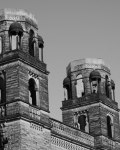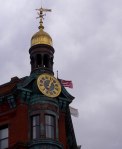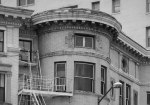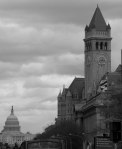Over the last couple decades, I have taken classes at a variety of post-secondary centres teaching everything from magazine writing to sketch writing to screenwriting, and one thing has always amazed and frustrated me about the majority of my classmates: They all think they are going to finish the class with a template for success.
For some reason, they believe that there is an inherent structure for a successful story that they can just drape story elements over. If I can just map out the three-act structure, I will win that Academy Award.
When in your lives have you ever walked out of a class with a structure for success? Ever! Ever!
Even the alphabet was merely a building block to communication. Please let me know who has gotten a job and achieved a pinnacle of success through the strict application of the alphabet as taught in pre-K or kindergarten. The alphabet is useless unless you rearrange and duplicate some of the letters, and even then there is more to it.
Don’t ask the instructor on what page the Act I turning point should come because not all screenplays are 110 pages and not all stories have their Act I turning point at the 25% point of the screenplay. (If you want your head to explode, try figuring out the Act I turning point of the movie Memento.)
Write the story that demands to be written, regardless of the canonical film, novel or sketch structure. Let the story and its characters tell you when things should happen. Luckily, because few of us still spit charcoal onto our hands against rock walls, we can easily move the elements of our story around later.
You can have the strongest architecture in the world, but if your story sucks, your screenplay sucks. If your characters aren’t truthful to themselves and your story, no one will believe them. Much as a roadmap doesn’t a vacation make, neither does a story structure a story make.
We learn these elements, the points in our writing, as guiding principles for our own thoughts, not as immovable stone markers for what must be.
When used correctly, this information can enhance a beautiful story, but when used as a crutch, it destroys creativity; we focus too much on the next point and not enough on the journey.
Write your play. Write your novel. Write your screenplay. Write your poem. Write your story.
Once you’ve done that, then check the beams and girders of your construction to make sure everything is exactly where it needs to be for the sake of that story.
























































